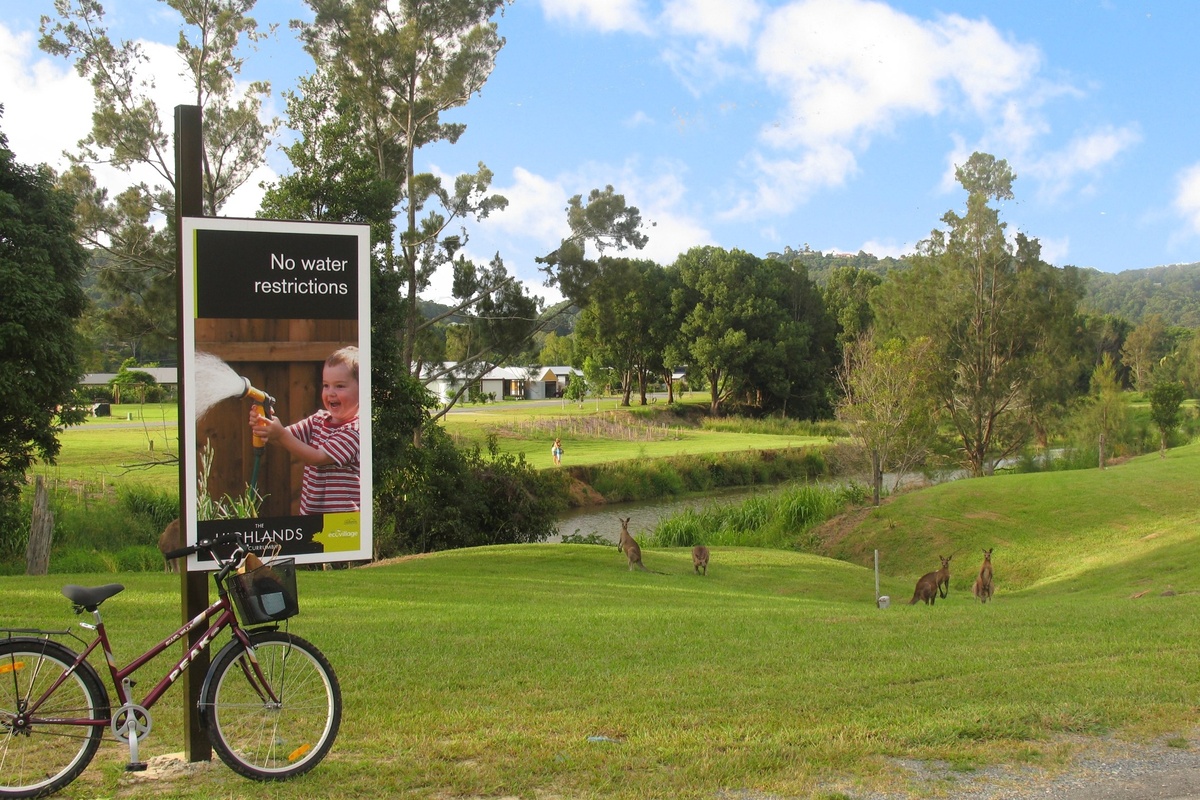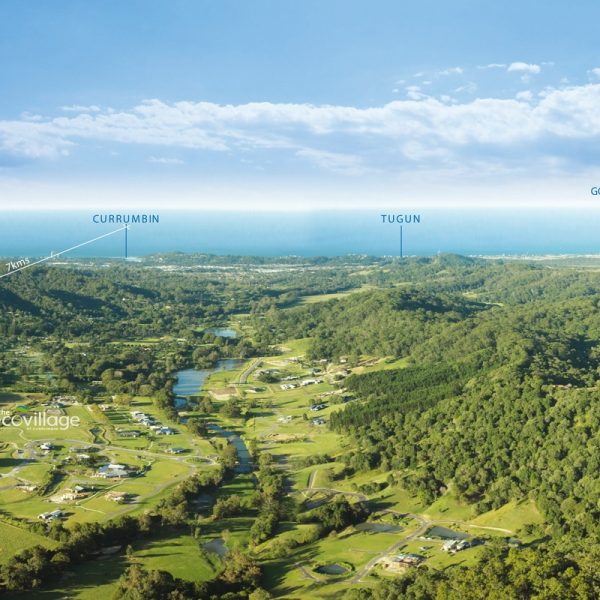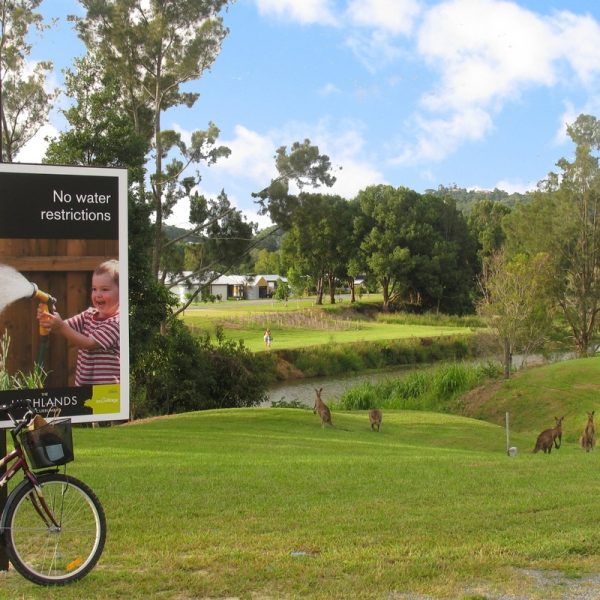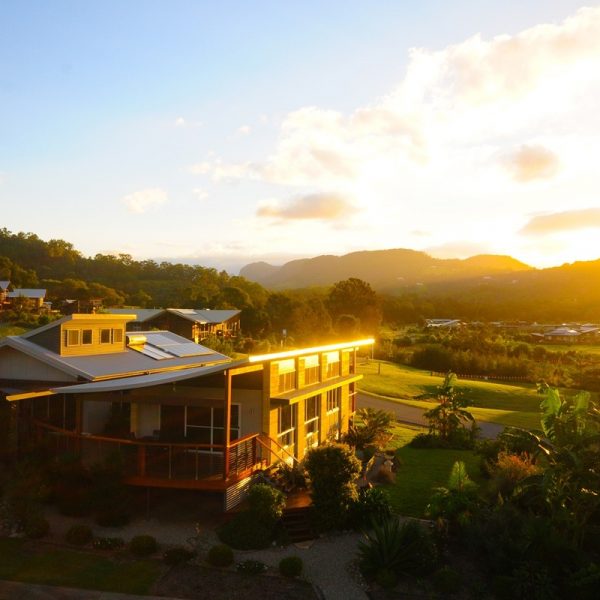Contact
Insight:
Urban household water supplied by rainwater
Project description
The Currumbin Ecovillage is a 147 lot development over 270 acres of land in the Gold Coast Hinterland. The development contains community title blocks which range from 400 to 1400m2. All the water supplied to the houses in the development is from a combination of large (greater than 20kL) rainwater tanks.
The drivers
Commitment to urban residential development sustainability supported by demonstration of off-grid water supply
- Sustainability commitment: To ensure compliance with a stated commitment to sustainability for the entire development, all house designs must include appropriately sized rainwater tanks as part of their design and be approved by the body corporate prior to the commencement of construction.
- Disconnected from mains water supplies: The Ecovillage is not connected to the water mains and therefore all water requirements need to be supplied on site.

The innovations
First Australian demonstration that urban residential developments can be 'off-the-grid' for water, including the safe collection and use of rainwater for potable uses
- Household collection and use of rainwater: Each property in the Ecovillage has 20-45kL rainwater tanks that collect and store rainwater, which is then used to supply the potable water for the household. The size required depends on the number of bedrooms in the house. The water is filtered and UV disinfected prior to use.
- Minimum design standards: The Ecovillage Architectural and Landscape Code provides the minimum volumes of the tank storage that are to be provided by each house. These minimums can be met by any configuration of tank sizes. An additional 5kL of storage is also required for fire-fighting purposes at each home. This complements the recycled water main which handles fire-fighting flows that fulfill state guidelines.
- Sustainable design: All of the rainwater tanks are located above ground to minimise disturbance of the soil and water table. Gas boosted solar hot water systems are also required for all houses which also need to have at least 1kW of grid connected photovoltaic generation capacity.
- Monitoring water flows: Household meters are installed under body corporate rules to monitor
rainwater and hotwater usage, using an integrated monitoring system (Ecovision) that provides residents with an internal display in each home. This system also monitors gas, energy, photovoltaic generation and recycled water use.
The lessons
- Upfront vs ongoing costs: While the upfront costs of the water infrastructure at the Ecovillage are generally greater than for more traditional subdivisions, the ongoing costs to the residents are less due to the off-grid solutions. There are also a range of other benefits from the off-grid solution including reliable use of recycled water for irrigating food and open spaces in all climate conditions, improved aesthetics and reduced pollutants entering the waterways.
- Trying something different requires a strong vision and process but also allows for flexibility: A strong vision and supporting process is essential to maintain the direction and integrity of an ecovillage development, in particular when complex interrelated issues arise. However the construction of the elements needs to be flexible and supported by collaborative working relationships between the contractor and developer to respond to challenges as they arise.
- Off-grid water servicing is possible in urban developments: Using an integrated water management system, it is possible to develop a community that has a very low impact on the environment, on local and regional sources of water, and on local waterways. To achieve this, designers must be systems thinkers and capable of detailed design using complex analysis.
Transferability
While at the moment is it unlikely that the fully decentralised Currumbin Ecovillage solutions can be taken directly into mainstream urban development, the demonstrated use of rainwater tanks to support household potable water in an urban environment can be replicated. The size of the storage will depend on the local rainfall patterns, projected water demand and availability of alternative water supplies for non-potable uses.
Project stats
Location
Currumbin Valley, QLD, Australia
Participants
Awards
The Ecovillage has won over 33 awards, including:
The World's Best Environmental Development (FIABCI Prix D'Excellence Award)
Most Sustainable Development 2006 (Queensland Environmental Protection Agency Award)
Best Sustainable Development and Best Small Subdivision in 2006 (Urban Development Institute of Australia, Qld)
Topics
Additional information
Contact
The outcomes
 Cities providing ecosystem services
Cities providing ecosystem services

- Reduced excess stormwater entering waterways: Capturing rainwater before it becomes stormwater runoff reduces volumes of excess runoff entering waterways, reducing erosion risk and improving waterway health.
 Cities as water supply catchments
Cities as water supply catchments

- Harvested roof water can meet urban demands: The Ecovillage demonstrates that appropriately sized rainwater tanks are able to supply the potable water requirements for each household.
 Cities comprising water sensitive communities
Cities comprising water sensitive communities

- Committed and informed residents: The upfront design requirements and ongoing household monitoring of water use has created a water sensitive community that is committed to sustainable water management.
Business case
| Costs | Benefits |
|
|
Interested in this solution?
We partner with small and large companies, government and industry in Australia and around the world.




Comments